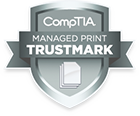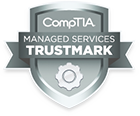Virtualization security often ends up on the back burner, and you probably didn’t even realize how important it is. However, like the rest of your technology, a virtualized infrastructure must be secured. To help keep yours protected, here are some of the security risks involved with virtualization and ways to control them.
Security risks of virtualization
Complex infrastructure – Much like virtualization itself, the infrastructure of a virtualization solution can oftentimes be confusing to small businesses. In fact, the complex configuration alone can be a big headache for it’s more difficult to spot anomalies and unusual events happening in your virtual machines and network.
Dynamic design – Virtualized environments are dynamic by nature and constantly changing. Unlike adding physical equipment, the addition of virtual machines can go almost completely unnoticed as they’re created in a matter of minutes and aren’t visible in your workspace. The danger here is the age old adage, “out of sight out of mind.” And if you add too many, they can easily become difficult to manage and protect, creating security holes in the process.
Quick moving workloads – As your virtualized infrastructure grows, there will come a time when you need to move data from one machine to another. While this may sound harmless, the real issue is that your virtual machines will likely require different levels of security. And when you’re juggling multiple workloads over multiple virtual machines, you may accidentally move mission critical data to a machine that has minimal protection.
How to mitigate risks
While these three risks may sound alarming, they can all be mitigated. The key behind effectively securing your virtual machines all comes down to process. Put some thought into your security processes and then implement them. Here are a few areas to cover:
- Organization – Decide how and where to separate your test, development, and production virtual machines.
- Audit – Develop a system to regularly audit your virtual machine security. Whenever possible, use tools to automate your security checks, balances, and processes.
- Patches – Perform regular security maintenance to ensure the patches are up-to-date for all virtual machines.
- Overflow management – Create a system to monitor all your virtual machines, identify what each of them is used for, and manage them accordingly.
- Responsibility – Designate an IT technician to watch over your virtual machines to ensure zero security gaps.If you prioritize proper management of your virtual machines, security doesn’t have to be an issue. Get in touch with us if you’re interested in getting additional assistance for your virtualized infrastructure or if you’re planning to implement a new virtualization solution. Call us today!


